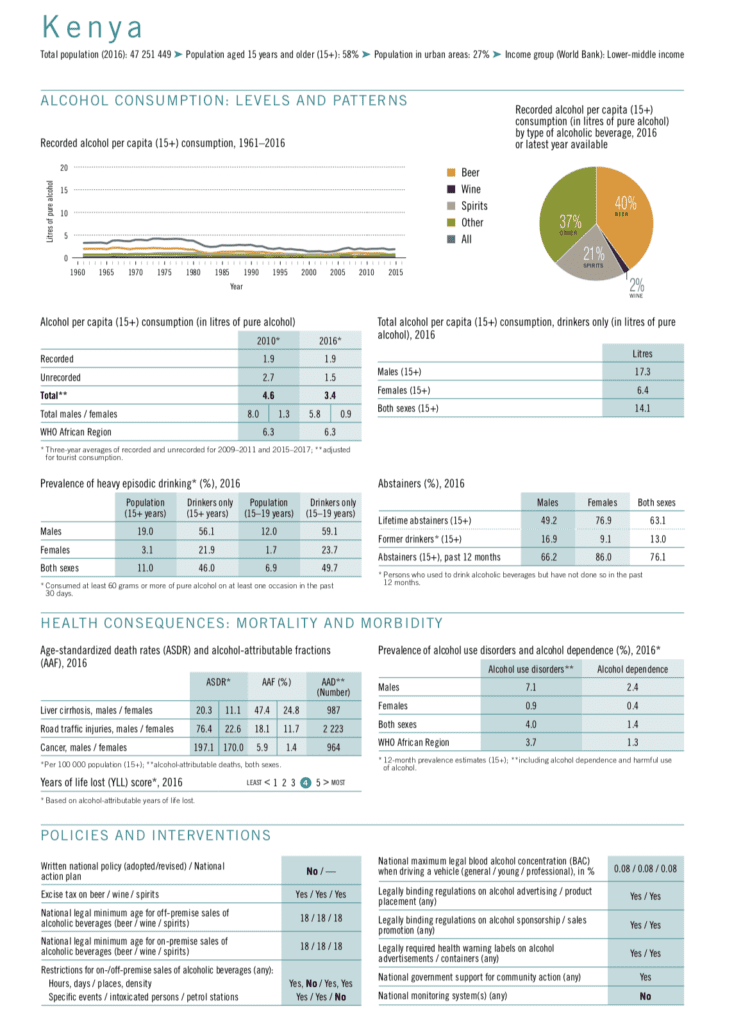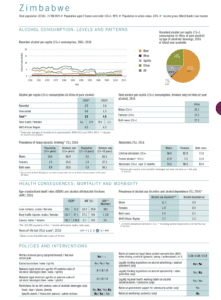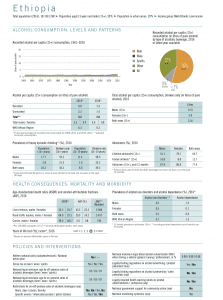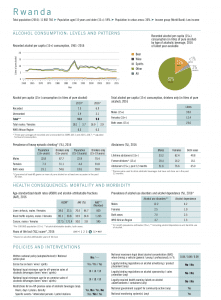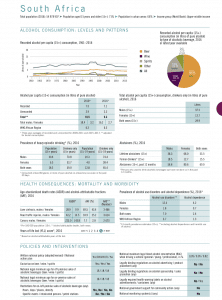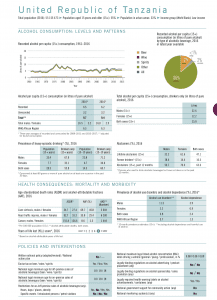My sisters and me are Big Alcohol target
I have written before about how Big Alcohol is targeting women all over Africa to ensure that they get more customers – cynically after decades of objectifying and sexualising us women in their marketing.
Already women make up more than 50% of the population but their rates and levels of alcohol use are much lower compared to men. To be precise: the rates of abstention from alcohol use among African women are very high. For public health and sustainable development this is important, as it is for children, families and communities of African societies. But for Big Alcohol this means a business opportunity. They consider women a potential market.
In Kenya, the country where I’m currently living, 86% of women abstain from alcohol consumption.
In my home country Zimbabwe, it is 90% of all women older than 15 years of age who did not consume any alcohol in the previous year. The numbers are similar across countries of Sub-Saharan Africa.
- ©WHO Global Alcohol Status Report 2018
- ©WHO Global Status Report 2018
- ©WHO Global Alcohol Status Report 2018
- ©WHO Global Alcohol Status Report 2018
- ©WHO Global Alcohol Status Report 2018
- ©WHO Global Alcohol Status Report 2018
It’s my sisters in these countries and me who have become a target for Big Alcohol.
To top off their aggressive push to hook women on their harmful products, Big Alcohol has begun linking their products to women’s rights, gender equality, female empowerment and even feminism. They are joining in campaigns such as water security, or Cancer Awareness month in order to feign support for the millions of women who are affected. In the meantime, Big Alcohol executives – the vast majority of them men from Western countries anyway – keep focusing on their profits, shareholder dividends and bonuses, not the health and welfare of women. For them, it’s about cash, not cancer prevention or any other social cause.
The Women And Alcohol In Sri Lanka: A Tale Of Feminism And Politics
Protecting the gains made for Women’s Rights (which Big Alcohol actually lobbied against), gender equality and female empowerment over the last century from the greed of the alcohol industry is something very important to me.
Who is included in the campaign?
It’s in this context, that I noticed the hashtag #dontpinkmydrink, last fall. I noticed a lot of the organizations, including IOGT International, and people I follow on Twitter who are advocating for alcohol prevention and control were retweeting and using this hashtag.
I couldn’t, wouldn’t bring myself to doing the same.
To be clear, I really support the basic idea of the campaign and have been advocating for the same for many years:
The #dontpinkmydrink campaign seeks to call out aggressive marketing of alcohol to women whether it’s pink, sweet or low calorie products aimed at women, or merchandising which suggests that it’s wine o’clock.”
Still, I couldn’t understand why this hashtag became so popular amongst these groups. The one question I had was:
Are we now working to stop the “pinking” of the alcoholic products and marketing by Big Alcohol or the fact that Big Alcohol was trying to hook women on their products, converting our mothers, daughters, sisters into consumers?
I felt that by using this hashtag, we are losing focus on what the struggle really is about. It seems to me that by using this particular hashtag, I’d be saying to Big Alcohol:
It’s ok that you produce this poison that causes cancer, heart disease, contributes to HIV/AIDS, TB, gender-based violence, causes and fuels poverty, wastes our much needed and scarce resource – water… but please, don’t link it to female empowerment.”
The question I am asking is, whose drink is this campaign about? Is it ok that ethanol continues to be in the drink as long as it is not pink anymore?
It’s here the problem lies, not in the idea, but in the execution: the campaign excludes all women who currently don’t use alcohol, all who don’t care for the ethanol drink – almost all our sisters in Africa and Asia who are the real targets of Big Alcohol. Of course the amount of women using alcohol in Western countries is much higher, but even there many women who abstain from alcohol are excluded.
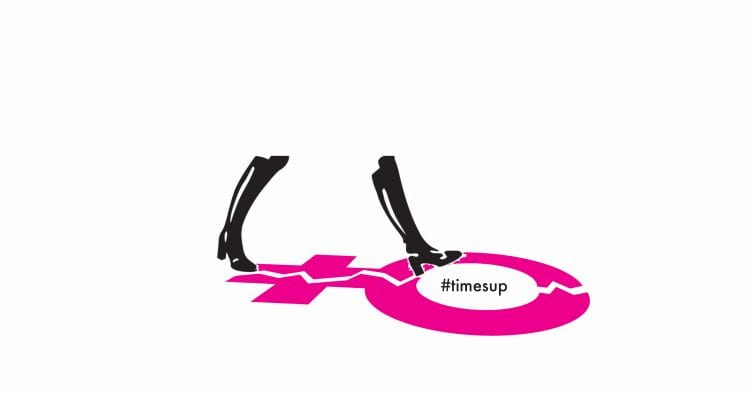
I also understand that the campaign proposes a solution to “… choose differently! What about bringing about change by using your purchasing power? We can all think twice about choosing to buy gimmicky alcohol-themed gifts and cards. Throughout the year we are bombarded with marketing of every kind from every direction, including alcohol. But why not choose differently, rather than a gift with an alcohol-theme could you treat those you love to some rest and relaxation time to themselves, or find an activity you can enjoy together?” But the slogan and hashtag of the campaign is about “my drink”. I think that is a pity. It doesn’t get to the core of the problem.
Getting to the core of the issue
It’s not that Big Alcohol is pinking alcohol!
We should be stopping the alcohol industry not only from abusing female empowerment but from targeting women and girls in the first place – all women and girls, not just those who are already consuming alcohol. Why must we water-down our message? Why should we short change our daughters, aunts, mothers, nieces, sisters?
We have clear evidence that alcohol causes (breast) cancer. Should the solution then be “don’t-pink-the-alcohol-I-am-using” or should it be stop glamorizing and marketing the poison that’s killing us? Stop poison my rights.
Let’s take a step back in time, if the tobacco-control campaign had not been united around the core message, I do not think that the strides made would have occurred. We would still have people smoking indoors, in cars, in planes etc. We must not forget who our adversary is – a powerful, rich, well-connected handful of gigantic corporations. We need to have one voice and one inclusive message.

This is serious and not just about a hashtag. It’s about who gets to define the problem and appropriate solutions. For example, evidence is very clear that alcohol fuels violence against women. Nevertheless, the feminist movement is reluctant to pick up the issue. It’s the gatekeepers, opinion leaders and power brokers in the Women’s Rights movement who are largely from Western countries and who are largely ignoring what sisters from low- and middle-income countries are telling them, the stories, the facts. #DontPinkMyDrink is well-meaning but comes up short because the real targets of the Big Alcohol campaign, our sisters who live free from alcohol, are not really included in the initiative.
It’s not about pink drinks. It’s about the poisoning of our rights.
We cannot be waylaid anymore, otherwise we already have lost this fight. The more voices that have the same message, e.g. from different countries, health sector, economic sector, civil society, NGOs, environment etc. will move mountains. So I urge all of us to pull up our socks, formulate an inclusive message that we want to get across, use the evidence that we have accumulated and stick to it. There’s the old adage: “United we stand, divided we fall” and I feel we are falling because we are not including all affected women and girls in the well-meaning initiatives and well-intended messages when it really matters.
